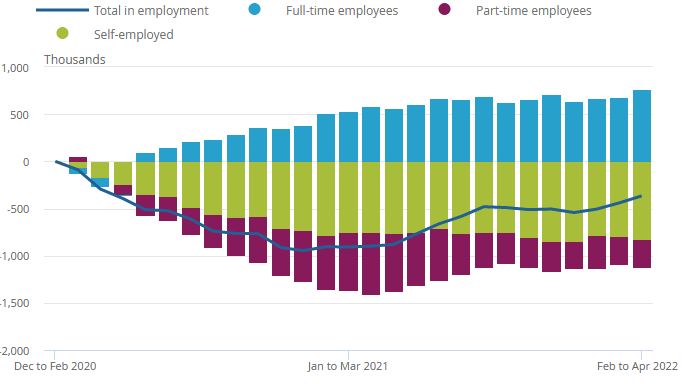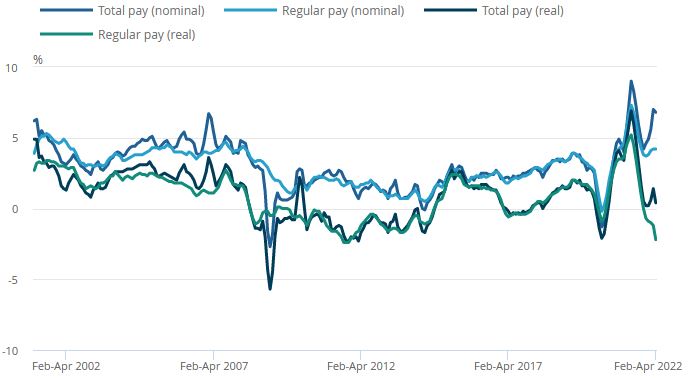ONS Labour Market June 2022
Vacancies at new record
- The number of job vacancies in March to May rose to a new record of 1,300,000. This marked an increase of 503,900 from pre-pandemic levels (Jan-Mar 2020).
- However, the rate of growth in vacancies slowed for a tenth consecutive period to 1.6%.
- Most industry sectors showed positive growth, with the highest seen in real estate activities (24.5%) and arts, entertainment and recreation (16.1%).
Payrolled employees jumps across hospitality
- Early payroll estimates for May show the number of payrolled employees rose by 3.9% year-on-year to 29.6 million. This is up 530,000 on the pre-Covid level, with the number of payrolled employees up by 1.8% since February 2020.
- The largest yearly increase in payrolled employees continued to be in accommodation and food services (a rise of 289,000 employees), while the smallest was in the construction sector (a rise of 2,000).
Unemployment just below pre-Covid rate at 3.8%
- The unemployment rate for February to April decreased by 0.2pp on the quarter to 3.8%. This was 0.1pp below pre-pandemic levels.
- The economic inactivity rate decreased by 0.1 percentage points to 21.3% in February to April. The decrease in economic inactivity was largely driven by those inactive because they were students.
Record high full-time employees
- The UK employment rate increased by 0.2 percentage points on the quarter to 75.6%, but is still 0.9pp below pre-pandemic levels.
- The number of full-time employees increased over the quarter to a record high, however this was partially offset by a decrease in the number of part-time employees.
UK employment by full-time and part-time employees and self-employed workers (people aged 16 years and over), seasonally adjusted, cumulative change from December 2019 to February 2020, for each period up to February to April 2022

Source: Office for National Statistics
Rise in hours worked
- Total actual weekly hours worked increased by 12.2 million hours compared with the previous quarter to 1.04 billion hours in February to April.
- This is still 7.6 million below pre-pandemic levels. But, total actual weekly hours worked by women exceed pre-coronavirus pandemic levels and are at a record high.
Inflation outpaces regular earnings
Annual regular pay continued to rise in the three months to April, but ultimately remains below inflation.
- In nominal terms, average regular pay (excluding bonuses) for employees in Great Britain was £562 per week before tax and other deductions from pay – up from £539 per week a year earlier.
- Average total pay (including bonuses) for employees in Great Britain was £604 per week before tax and other deductions from pay – up from £576 per week a year earlier.
- Regular and total pay growth rose by 4.2% and 6.8% respectively in the three months to April compared to a year earlier.
- In real terms (adjusted for inflation), total pay rose 0.4% in the three months to April, while regular pay declined 2.2% over the period.
Average weekly earnings annual growth rates in Great Britain, seasonally adjusted, January to March 2001 to February to April 2022

Source: ONS
Back to Retail Economic News